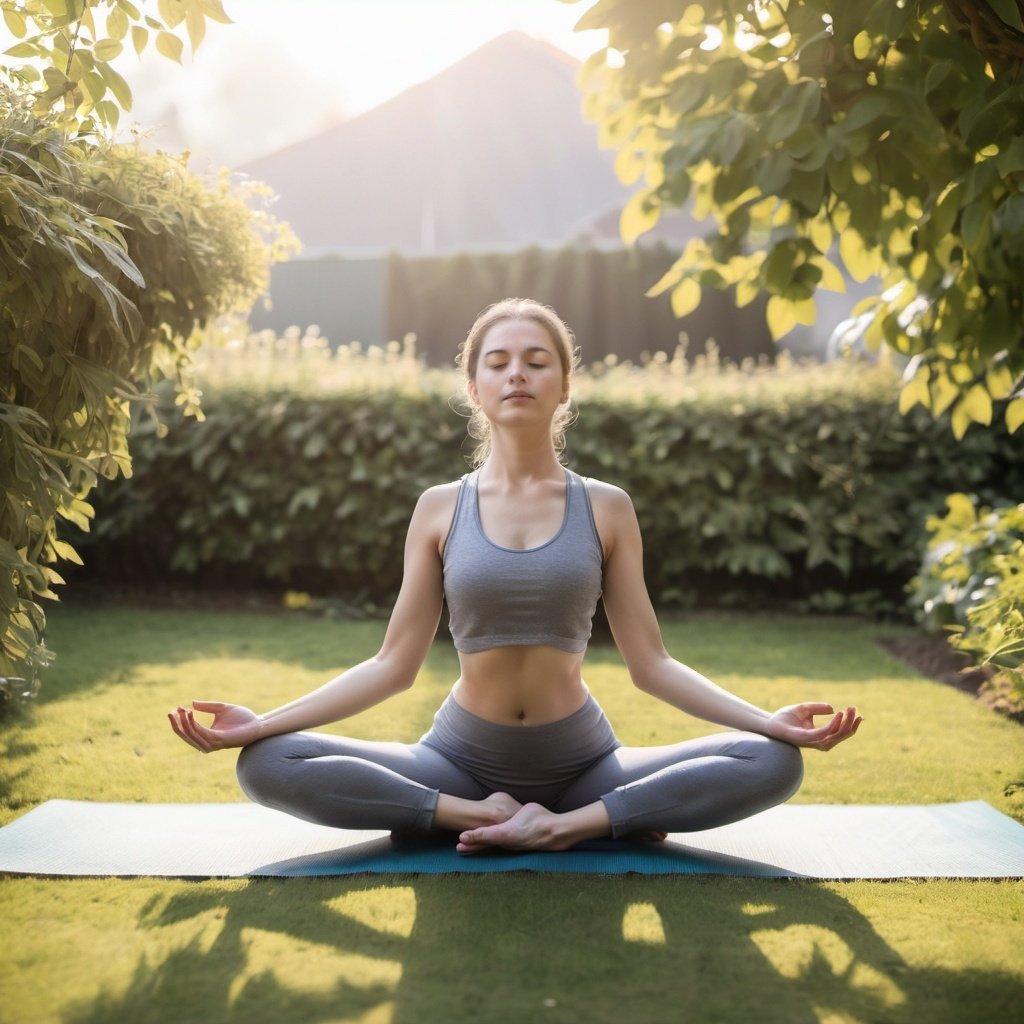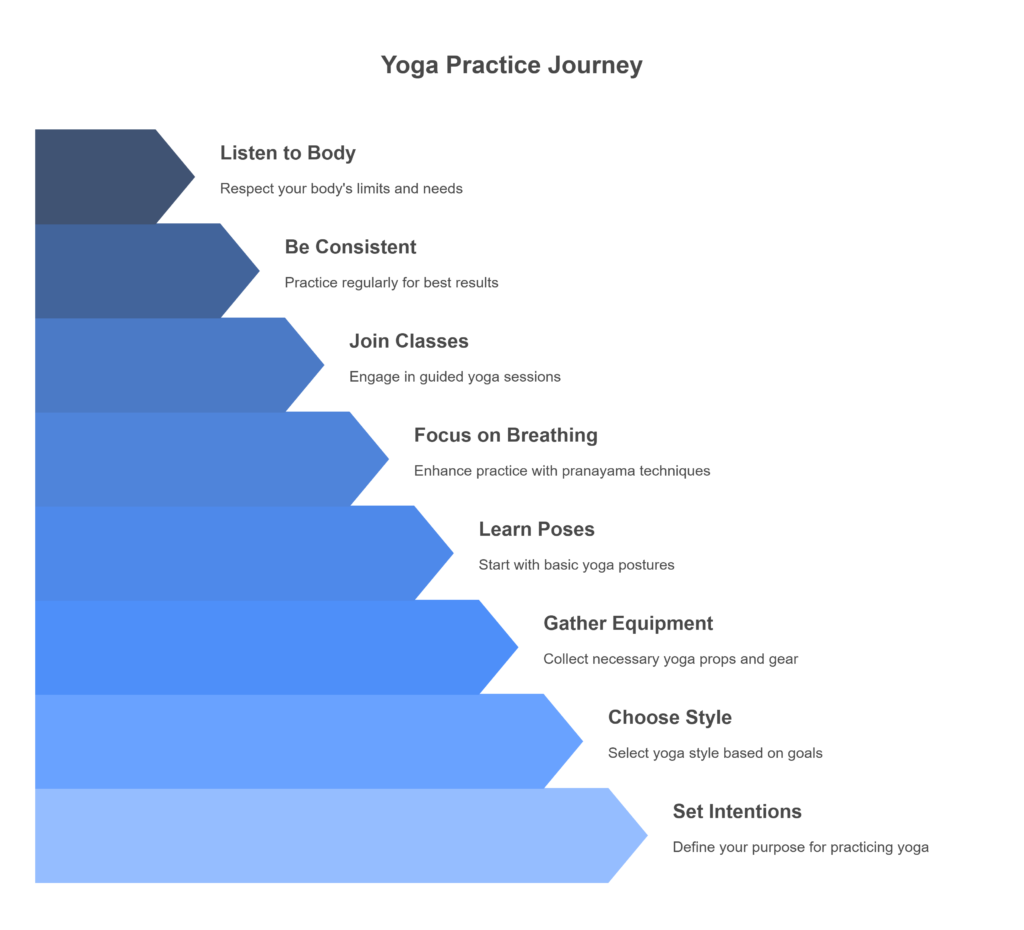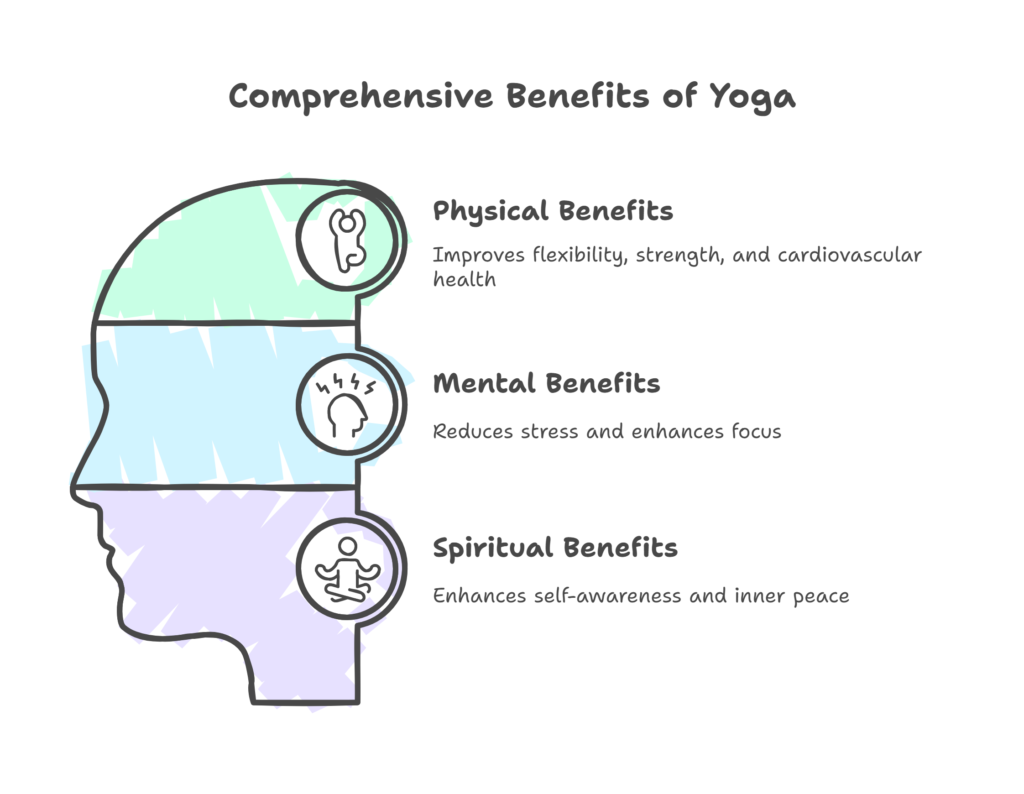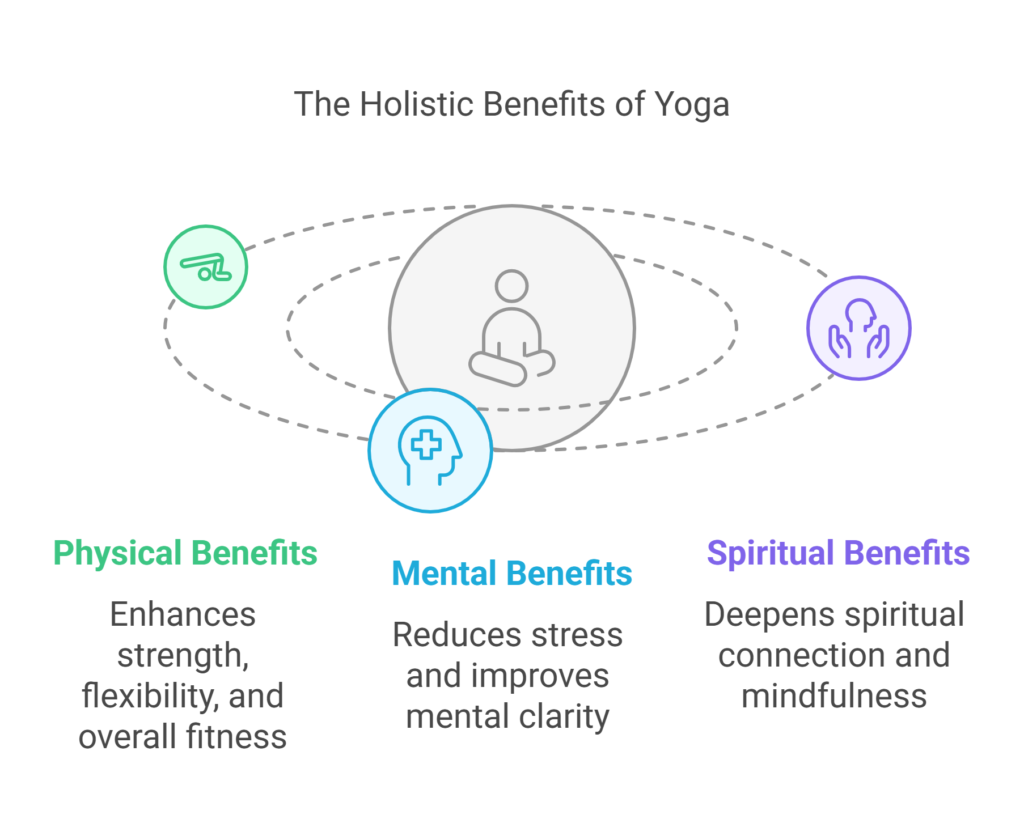Yoga is an ancient practice that has been embraced worldwide for its physical, mental, and spiritual benefits. Originating in India over 5,000 years ago, it is more than just a form of exercise—it’s a holistic approach to achieving balance and harmony in life. In this comprehensive guide, we’ll explore the different types of yoga, their unique benefits, and how you can incorporate this practice into your daily routine.

What is Yoga?
It is a mind-body practice that combines physical postures (asanas), breathing techniques (pranayama), and meditation (dhyana). The word “yoga” comes from the Sanskrit root “yuj,” which means “to unite” or “to join.” This reflects the ultimate goal: to unite the mind, body, and spirit.
Types of Yoga and Their Benefits
There are many styles of yoga, each with its own focus and benefits. Here’s a detailed look at the most popular types:
1. Hatha Yoga
- What It Is: Hatha is a gentle introduction to the most basic yoga postures. It’s often recommended for beginners.
- Benefits:
- Improves flexibility and balance.
- Reduces stress and promotes relaxation.
- Builds a strong foundation for other yoga styles.
- Best For: Beginners or those looking for a slow-paced practice.
2. Vinyasa Yoga
- What It Is: Vinyasa is a dynamic style that links breath with movement. Each pose flows smoothly into the next.
- Benefits:
- Increases cardiovascular fitness.
- Enhances strength and flexibility.
- Boosts mental focus and coordination.
- Best For: Those who enjoy a more active and fluid practice.
3. Ashtanga Yoga
- What It Is: Ashtanga is a rigorous style that follows a specific sequence of postures. It’s physically demanding and often practiced in a heated room.
- Benefits:
- Builds endurance and stamina.
- Detoxifies the body through sweat.
- Promotes discipline and mental clarity.
- Best For: Experienced yogis seeking a challenging workout.
4. Iyengar Yoga
- What It Is: Iyengar focuses on precise alignment and uses props like blocks, straps, and bolsters to help achieve correct postures.
- Benefits:
- Improves posture and alignment.
- Reduces the risk of injury.
- Enhances body awareness.
- Best For: Individuals recovering from injuries or those who prefer a detail-oriented practice.
5. Bikram Yoga
- What It Is: Bikram consists of a series of 26 postures practiced in a room heated to 105°F (40°C) with 40% humidity.
- Benefits:
- Promotes detoxification through sweating.
- Increases flexibility and range of motion.
- Improves circulation.
- Best For: Those who enjoy intense, structured workouts.
6. Kundalini Yoga
- What It Is: Kundalini combines postures, breathing techniques, chanting, and meditation to awaken the energy at the base of the spine.
- Benefits:
- Boosts energy levels.
- Enhances spiritual awareness.
- Reduces stress and anxiety.
- Best For: Individuals seeking a spiritual and transformative practice.
7. Yin Yoga
- What It Is: Yin is a slow-paced style where poses are held for several minutes to target deep connective tissues.
- Benefits:
- Improves flexibility and joint mobility.
- Promotes relaxation and stress relief.
- Encourages mindfulness and introspection.
- Best For: Those looking for a meditative and restorative practice.
8. Restorative Yoga
- What It Is: Restorative yoga uses props to support the body in passive poses, allowing for deep relaxation.
- Benefits:
- Reduces stress and anxiety.
- Promotes healing and recovery.
- Improves sleep quality.
- Best For: Individuals recovering from illness or injury, or those seeking deep relaxation.
This transformative practice offers something for everyone, regardless of age, fitness level, or experience. By exploring different types and incorporating them into your routine, you can unlock a wealth of physical, mental, and spiritual benefits. Whether you’re looking to build strength, reduce stress, or deepen your spiritual connection, it provides the tools to help you achieve your goals.
- What It Is: Power yoga is a fitness-based approach to Vinyasa-style yoga. It’s fast-paced and focuses on building strength.
- Benefits:
- Builds muscle tone and strength.
- Increases cardiovascular endurance.
- Enhances mental focus.
- Best For: Fitness enthusiasts looking for a challenging workout.
10. Prenatal Yoga
- What It Is: Prenatal yoga is tailored for pregnant women to support their changing bodies and prepare for childbirth.
- Benefits:
- Reduces pregnancy-related discomfort.
- Improves strength and flexibility for labor.
- Promotes relaxation and stress relief.
- Best For: Expectant mothers.
Step-by-Step Guide to Starting Yoga

Step 1: Set Your Intentions
Before starting yoga, ask yourself why you want to practice. Whether it’s for physical fitness, stress relief, or spiritual growth, setting clear intentions will help you stay motivated.
Step 2: Choose the Right Style
Based on your goals and fitness level, select a yoga style that suits you. Beginners may start with Hatha or Vinyasa, while advanced practitioners might explore Ashtanga or Power Yoga.
Step 3: Gather Essential Equipment
- Yoga Mat: Provides cushioning and grip.
- Comfortable Clothing: Wear breathable, stretchy attire.
- Props: Blocks, straps, and bolsters can enhance your practice.
Step 4: Learn Basic Poses
Start with foundational poses like:
- Mountain Pose (Tadasana)
- Downward-Facing Dog (Adho Mukha Svanasana)
- Warrior I (Virabhadrasana I)
- Child’s Pose (Balasana)
Step 5: Focus on Breathing
Practice pranayama (breathing techniques) to enhance your yoga practice. Start with Ujjayi breath, a deep, rhythmic breathing technique.
Step 6: Join a Class or Practice at Home
- In-Person Classes: Offer personalized guidance and community support.
- Online Classes: Provide flexibility and convenience.
- Home Practice: Allows you to practice at your own pace.
Step 7: Be Consistent
Aim to practice yoga 3-5 times a week. Even 15-20 minutes daily can yield significant benefits.
Step 8: Listen to Your Body
Avoid pushing yourself too hard. Yoga is about progress, not perfection. Modify poses as needed and take breaks when necessary.
Benefits of Yoga for Overall Well-Being

- Physical Benefits:
- Improves flexibility, strength, and balance.
- Enhances cardiovascular health.
- Supports weight management.
- Mental Benefits:
- Reduces stress and anxiety.
- Improves focus and concentration.
- Promotes emotional balance.
- Spiritual Benefits:
- Enhances self-awareness.
- Fosters a sense of inner peace.
- Encourages mindfulness and gratitude.
Conclusion

Yoga is a transformative practice that offers something for everyone, regardless of age, fitness level, or experience. By exploring different types of yoga and incorporating them into your routine, you can unlock a wealth of physical, mental, and spiritual benefits. Whether you’re looking to build strength, reduce stress, or deepen your spiritual connection, yoga provides the tools to help you achieve your goals.
So, roll out your mat, take a deep breath, and embark on your journey today. Namaste!
External Links (Links to authoritative sources)
These should reference high-quality, trustworthy sites to provide additional information. Examples:
- For “Yoga is an ancient practice that originated in India”, link to a credible source like Yoga Journal or The Yoga Institute.
- For “Yoga Improves Mental Health”, link to a study from National Institutes of Health (NIH) about yoga’s impact on stress and anxiety.
- For “Different Types of Yoga”, link to an authoritative guide on International Yoga Federation.
Their flower strains are astrologically timed to resonate with specific zodiac archetypes during solar alignments.